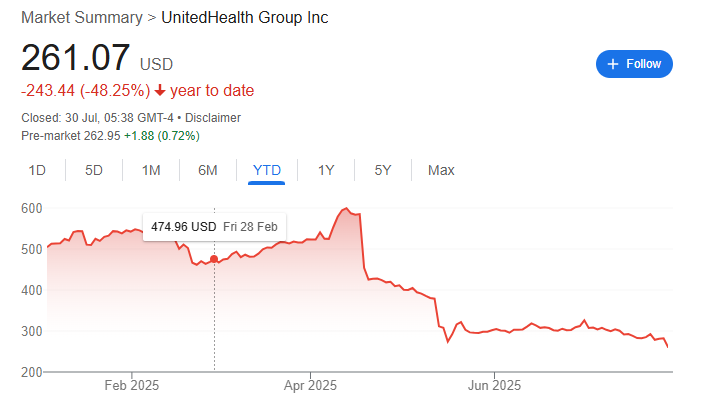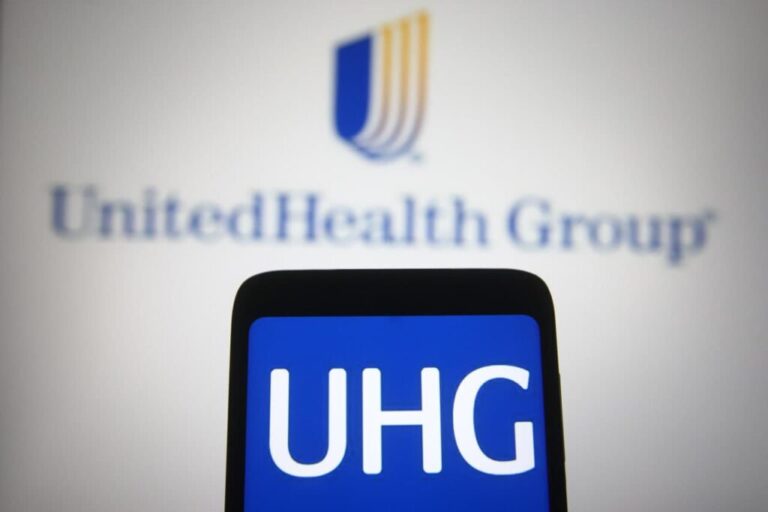UnitedHealth’s (NYSE: UNH) turbulent run in 2025 is escalating after the firm reported disappointing Q2 earnings results, but an AI platform has identified strategic entry points for long-term investors.
In the wake of the earnings report, UNH shares have suffered a steep decline, closing the last session at $261, the lowest level in five years. In the past 24 hours, the stock has plunged over 7%, bringing its year-to-date loss to 48%.

Rising medical costs, a Department of Justice investigation, and a significant cut in earnings guidance have fueled this downturn.
For the second quarter, UnitedHealth posted adjusted EPS of $4.08, missing analyst estimates and marking a 40% year-over-year decline. Revenue rose 12.9% to $111.6 billion, with premiums up to $87.9 billion.
However, a 20% jump in medical costs to $78.6 billion pushed the medical care ratio to 89.4%, driven by worsening medical trends and reduced Medicare funding.
Ideal time to buy UNH stock
Regarding the best time to buy the stock, Finbold consulted OpenAI’s ChatGPT, which noted that in the near term, UnitedHealth remains a risky bet. The uncertainty surrounding regulatory scrutiny and deteriorating margins makes it an unattractive entry point. It noted that technically, no bottom has been confirmed, and the stock could still dip further to the $240 and $250 range.
However, the AI model noted that the outlook could improve by late 2025 into early 2026. In this case, 2025 is expected to be the “reset year” for the company, setting the stage for a potential recovery in 2026.
Historically, UnitedHealth has staged strong rebounds from previous cost crises, including those in 2008 and 2017. If the stock holds above $260 and guidance improves, ChatGPT noted that this could signal a solid buying opportunity.
By late 2026 and beyond, analysts expect EPS to rebound to $18 and $20, potentially pushing the stock to $360 and $400 at typical valuation multiples. To this end, the AI tool noted that long-term investors may find today’s depressed levels an attractive entry if they can endure near-term volatility.
In summary, the AI tool advised against rushing in. Instead, investors should watch the $250 support level and wait for clearer signals from Q3 and Q4 2025 earnings. Gradual dollar-cost averaging is seen as a safer approach amid ongoing uncertainties.
Featured image via Shutterstock








